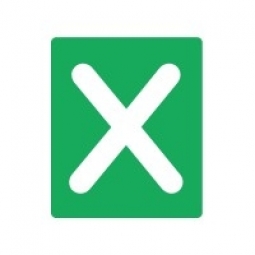Technology Category
- Cybersecurity & Privacy - Application Security
- Cybersecurity & Privacy - Cloud Security
Applicable Industries
- Cement
- National Security & Defense
Applicable Functions
- Logistics & Transportation
- Product Research & Development
Use Cases
- Tamper Detection
- Time Sensitive Networking
Services
- Cloud Planning, Design & Implementation Services
- Training
About The Customer
Matillion is a leading data integration company that helps teams get data business-ready, faster. The company accelerates time-to-value and increases the impact data can have. Thousands of enterprises, including Cisco, DocuSign, Pacific Life, Slack, and TUI, trust Matillion to load, transform, sync, and orchestrate their data for a wide range of use cases, from insights and operational analytics to data science, machine learning, and AI. Matillion's native integration with popular cloud data platforms allows data teams at every skill level to automate management, refinement, and data delivery for every data integration need.
The Challenge
Matillion, a leader in data integration, faced a significant challenge as its customers increasingly adopted a cloud-first approach. The company's security requirements evolved to handle more users, complex use cases, and larger cloud workloads. Initially, Matillion deployed software into customer infrastructure, which allowed rapid expansion and ensured customers had full data sovereignty. However, as customers migrated to SaaS applications, Matillion had to continually evolve its strategy to protect new infrastructure vulnerable to attacks. The company's rapid global expansion and growing roster of enterprise customers further complicated the situation, as these customers scrutinized Matillion's security defenses. The company needed a solution that could keep pace with the rapidly evolving threat landscape and instill confidence in IT decision-makers about Matillion's cloud security.
The Solution
Matillion chose Expel managed detection and response (MDR) as its managed security partner. Expel MDR met all of Matillion's expectations for a managed solution to handle the heavy lifting of cloud security, while supporting the company as it innovated new features. The solution was cloud-native, integrated with Matillion's existing technology, and ready for the cloud. After a short proof of concept, Matillion was able to set up Expel MDR in about a day. The solution helped Matillion achieve ISO certification, a differentiator among other data integration vendors. Expel MDR's ease of integration with many endpoint security providers gave Matillion's security teams the freedom to choose the best solutions for their tech stack, without needing training for those new solutions. The solution automated alerts and delivered only the most relevant and critical for review, reducing the time to resolution.
Operational Impact
Quantitative Benefit

Case Study missing?
Start adding your own!
Register with your work email and create a new case study profile for your business.
Related Case Studies.

Case Study
System 800xA at Indian Cement Plants
Chettinad Cement recognized that further efficiencies could be achieved in its cement manufacturing process. It looked to investing in comprehensive operational and control technologies to manage and derive productivity and energy efficiency gains from the assets on Line 2, their second plant in India.

Case Study
Data Capture for Afghanistan Forces
Electronic equipments on the field of Afghanistan provided information on the status of the vehicle and to identify potential threats surrounding it to the British Force. The monitoring and interpretation of this data requires robust and sophisticated digitization for data capture and communication.

Case Study
Digital Transformation of Atlanta Grout & Tile: An IoT Case Study
Atlanta Grout & Tile, a Tile, Stone & Grout restoration company based in Woodstock, Georgia, was facing challenges with its traditional business model. Despite steady growth over the years, the company was falling behind the web revolution and missing out on the opportunity to tap into a new consumer base. They were using independent software from different vendors for each of their department information and workforce management. This resulted in a lot of manual work on excel and the need to export/import data between different systems. This not only increased overhead costs but also slowed down their response to clients. The company also had to prepare numerous reports manually and lacked access to customer trends for effective business decision-making.

Case Study
Major Aerospace Company Automates Asset Management
The O&M division of an aerospace and global security company was using spreadsheets to manually track more than 3,000 assets assigned to students and staff. Maintaining audit trails for this high volume of equipment became increasingly time-consuming and challenging. The chore involved knowing precisely what equipment was on hand, what had been issued, its location and the name of the custodial owner of each item. Every aspect of this task was carried owner of each item. Every aspect of this task was carried out by individuals with spreadsheets. Manually documenting the full lifecycle of each asset added to the burden. This included tracking maintenance requirements and records, incidents and damages, repairs, calibrations, depreciation, and end-of-life data.

Case Study
Revolutionizing Construction Equipment Rental: A Case Study on ProsRent and ENO8
ProsRent, a startup that won the 'Best Financial Opportunity' and 'Best Pitch' at CodeLaunch 2016, aimed to revolutionize the way construction professionals source and rent heavy equipment. In the construction industry, project managers and contractors typically rent heavy equipment from supply companies. However, predicting inventory can be challenging, and finding the required equipment at the right time and place can be a hassle. If the preferred vendor doesn't have the required equipment, it results in wasted time and money in searching for it, often leading to higher costs due to non-preferred rates and increased delivery costs if the vendor is located far from the job site. Suppliers, on the other hand, desired access to a wider base of trusted renters that they didn't have to vet themselves and wanted to offer dynamic rental pricing based on demand and availability in their market. ProsRent's challenge was to produce a minimum viable product that was fast and first to market but also strong enough to engender loyalty and repeat business from the target market.




